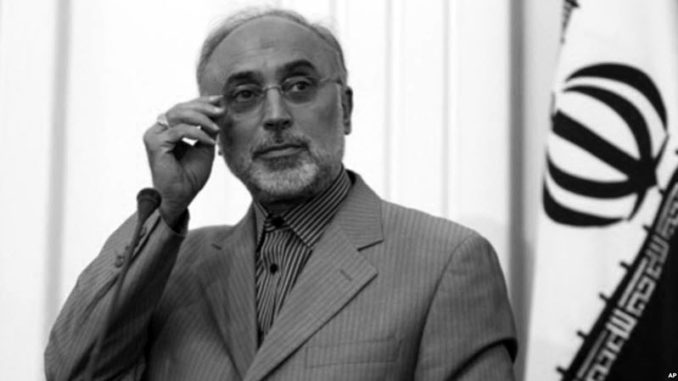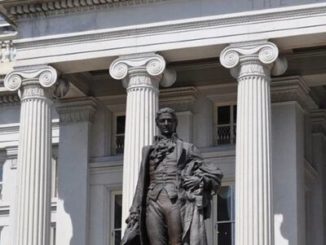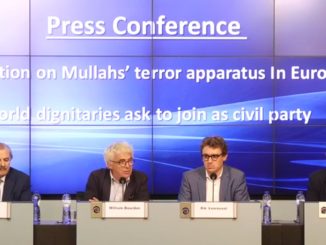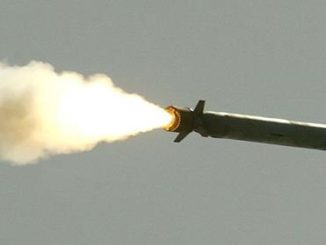
Facing international sanctions, the defying regime of Iran opens new centrifuge rotor factory to boost uranium enrichment capacity prior to the actual pinch of re-imposed sanctions while still hoping to preserve JCPOA and enjoying European appeasement.
The head of Iran’s Atomic Energy Organization announced on Wednesday that operations had begun at a factory tasked with producing rotors for as many as 60 uranium enrichment centrifuges per day. The announcement follows upon months of prior warnings that Iran would greatly ramp up its nuclear activities in response to any actual or perceived loss in the benefits that Iran enjoyed as a result of the implementation of the 2015 nuclear deal, also known as the Joint Comprehensive Plan of Action (JCPOA).
U.S. President Donald Trump famously pulled out of the JCPOA in May after previously refusing to certify that Iran was fully complying with the deal. This naturally prompted the Islamic Republic to threaten retaliation, as by suggesting that within a very short period of time, the country would be able to exceed the levels of nuclear enrichment and the quantities of stockpiled nuclear material that had existed in 2015. The latest remarks from AEOI Director General Ali Akbar Salehi seemed to directly affirm these earlier boasts.
By the same token, Salehi’s recent comments arguably had the same consequences, in terms of justifying the criticisms that had underlain President Trump’s withdrawal from the JCPOA in the first place. According to Salehi, the centrifuges that are currently being manufactured will be able to immediately begin enriching approximately 950 tonnes of raw uranium that were acquired after the 2015 negotiations. Additionally, the AEOI head declared that the newly activated rotor production plant had been built during those negotiations, in preparation for its use after the terms of the JCPOA were relaxed or revoked.
Both of these claims support the notion that the Islamic Republic had not been committed to long-term compliance with the nuclear deal, or that it had been exploiting loopholes in the agreement to expand its potential nuclear capabilities, with an eye toward utilizing that potential after breaking the agreement or after its sunset provisions began to take effect 10 years after its signing.
One might suppose that by not just reaffirming earlier warnings but actually announcing the start of new activities related to nuclear enrichment, the Iranian regime is demonstrating greatly diminished confidence in the preservation of the JCPOA subsequent to the U.S. withdrawal. Secondary sanctions that were suspended under the agreement will go back into full effect in November, but the European Union and the non-American signatories to the deal have been using the interim period to explore means of maintaining its implementation in spite of the threat of U.S. penalties.
These efforts were dealt a blow on Wednesday when the head of the European Investment Bank declared that the lending institution would not be able to actively operate in Iran once U.S. sanctions were back in place. Furthermore, EIB President Werner Hoyer pointed out that the European Commission cannot compel the bank to conduct such operations, regardless of any plans it has made for utilizing this and other institutions as facilitators for ongoing European investment in the Islamic Republic.
The Reuters report on this announcement notes that Federica Mogherini, the head of EU foreign policy, is still trying to secure guarantees of Iranian oil revenue, in line with demands that the regime had made in earlier discussions over the future of the JCPOA. But it is increasingly unlikely that the Iranian ultimatums will be met, and so it may be said that Tehran is being driven into a position whereby it must decide whether to follow through on earlier threats and thus break away from the JCPOA altogether.
As Mogherini and others struggle to prevent this outcome, they naturally face obstacles from the Trump administration and other opponents of the Iranian regime, as well as the EIB and the various European companies that have already decided to extricate themselves from the Iranian market ahead of the return of US sanctions. The Foundation for Defense of Democracies described the ongoing conflict between the US and Europe on this issue, highlighting four tactics the US has been employing in the 180 day period between Trump’s withdrawal from the JCPOA and full re-imposition of suspended sanctions.
Firstly, the White House is signaling its general resolve on the issue, thereby discouraging push-back from allies. Secondly, it is specifically discouraging Western businesses from maintaining their relationships with Iranian counterparts. Thirdly, it is pushing for consensus among allied governments regarding Iran sanctions and Iran policy in general. And fourthly, it is using existing sanctions to impede the efforts to Iran-backed militants, the Iranian Revolutionary Guard Corps, and the Iranian Ministry of Intelligence.
While the U.S. clearly still faces opposition from Europe in the specific area of the JCPOA, there is a good deal of publicly-expressed sentiment among European leaders regarding the need to confront Iran over terrorism, regional imperialism, and so on. Supporters of Iran’s democratic Resistance movement have been pushing for a stronger European response to the revelation of a foiled Iranian terror plot which would have targeted the Paris rally of the National Council of Resistance of Iran on June 30. Meanwhile, the governments of France and other European countries have themselves been pushing for greater international commitment to curbing Iran’s influence in Syria.
Accordingly, there are signs that this is one area of Iran policy on which the US might be able to lead its European allies in the near term. As Iran’s own Press TV pointed out on Monday, U.S. National Security Advisor John Bolton has insisted that the U.S. will remain in Syria for as long as Iran does, thus reversing President Trump’s earlier statements in support of a withdrawal of U.S. troops following the defeat of the Islamic State terrorist group.
Washington can thus be expected to continue bolstering the efforts of Syrian democratic opposition groups as well as foreign entities like Israel that are fully committed to preventing a permanent Iranian foothold on Syrian territory, which would contribute to the development of an Iran-led “Shiite crescent” that stretches at least as far as the Lebanese home of the Hezbollah terrorist group. On Tuesday, The Tower credited Israel with sending a “strong message” to the Iranian regime on this topic, by way of an attack on a Syrian military airbase that was run by the IRGC. That question that arises in the wake of that attack is whether the message will be mutually reaffirmed by the US and the EU.
It also remains to be seen how the Islamic Republic responds to that collective pressure. So far, in the face of the multiple threats of U.S. sanctions, challenges to its foreign power, and widespread domestic calls for regime change, the regime has maintained a defiant tone. The Iran Project pointed out on Wednesday that Ali Akbar Velayati, a leading adviser to Supreme Leader Ali Khamenei, had not only reaffirmed the Iranian mission in Syria but had also declared that the Islamic Republic is prepared to similarly intervene in Yemen, if the Iran-backed Houthi rebel group requests more direct assistance in its fight against the recognized government of Yemen and its Saudi-led Arab backers.
But it bears remembering that all of this defiance comes prior to the actual pinch of re-imposed sanctions, and at a time when the most optimistic voices inside the Iranian regime may not yet be willing to write off the possibility of European preservation of the JCPOA, or other significant forms of foreign support.
(Source: Iran News Update)




